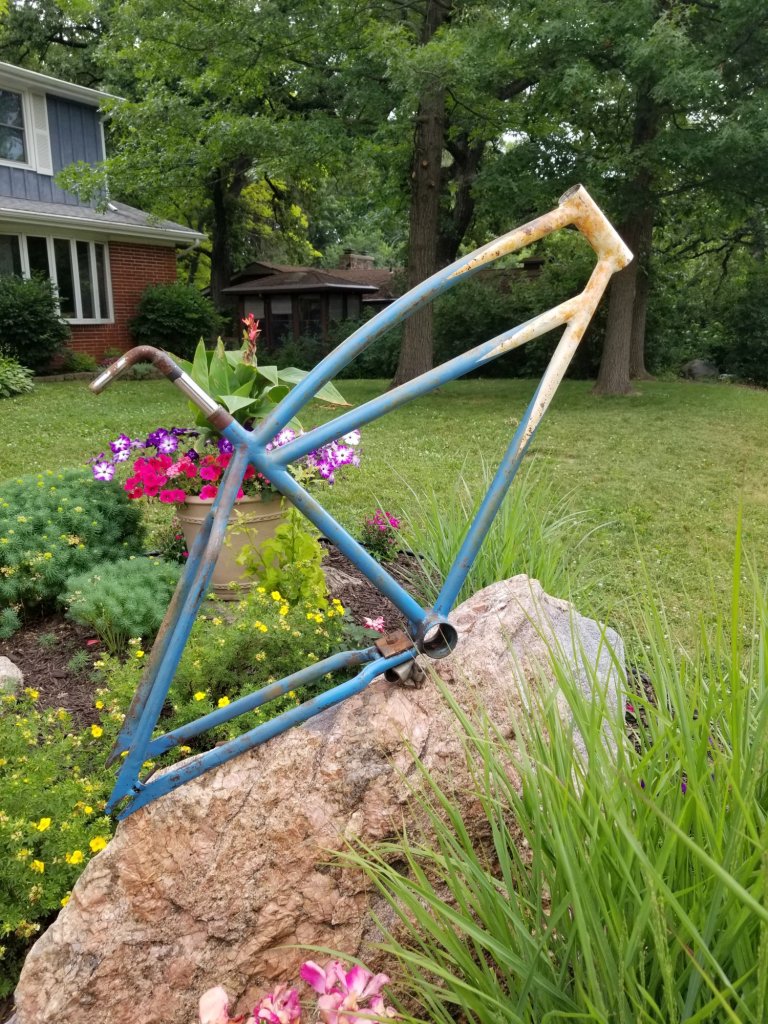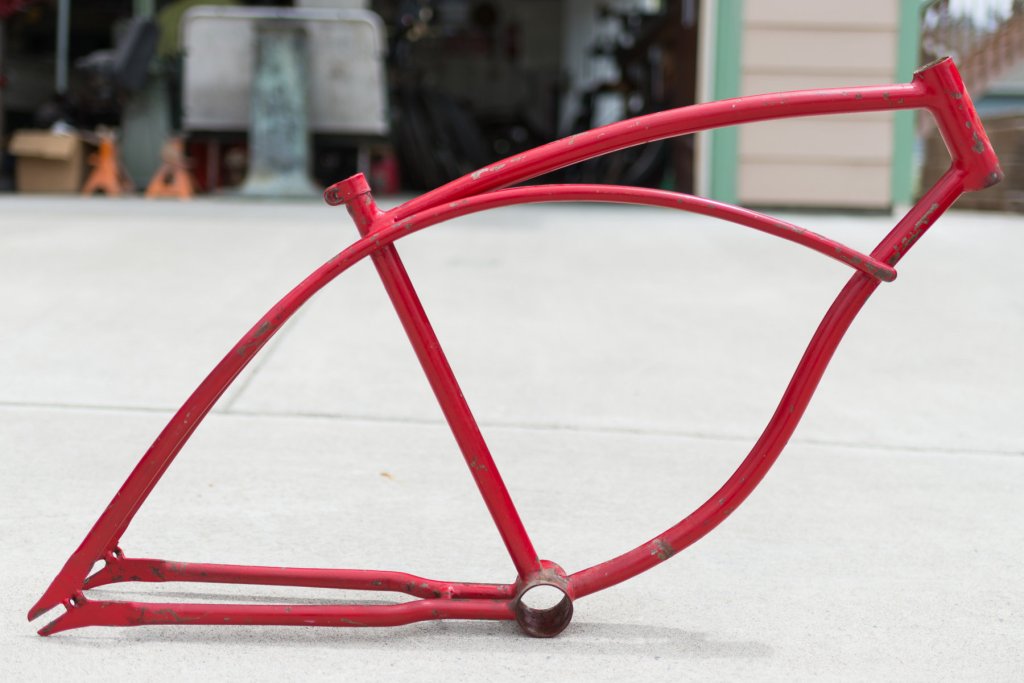getting mixed info quote. As previously mentioned the first balloon tire bikes had either a motorbike or camel back style frame. Starting in 1935 Schwinn introduced a new style frame. The first design
straight bar frame is generally called a ‘double diamond’ due to the straight seat stays which create a triangle or diamond shape to match the front part of the bike (Fig. 6
For 1936 the
straight bar frame had curved seat stays and this feature would remain through the end of production of the straight bar frame (Fig. 7).
In 1938 Schwinn introduced the iconic
cantilever frame (Fig. 8). Since its introduction the cantilever frame has been copied by nearly every bicycle manufacturer.
In 1939 Schwinn introduced a budget minded line called the DX. At first glance the
DX frame (Fig. 9) looks very similar to the straight bar frame. Upon closer inspection however you will notice that the bottom bar (underneath the top tube) has a slight curve to it. For this reason the tanks between a straight bar and a DX will not interchange. The first year frame (1939) shown in Fig. 9 has built in drop stand ears. 1940 and later DX frames will not have these ears and look like Fig. 1. This is one of the few Schwinn frames to ever have this feature. The DX frame was only used until 1953 which is before Schwinn introduced its middleweight line so all DX frames are balloon tire bicycles.

By identifying whether or not a frame is pre or post war along with the style it will aid in potentially narrowing down the model of bike even if it lacks other identifying features such as a name on a chainguard which is never found on prewar bikes. As mentioned above there are many other differences on these frames, Besides the different sizes the straight bar and DX frames may have straight or curved down tubes and the tanks for B and BC straight bars will not fit C model straight bars and vice versa.
Armed with this information you should be able to determine whether you have a straight bar, DX, or cantilever frame. Enjoy the ride!













































































